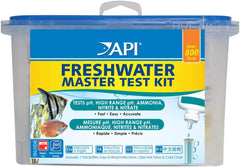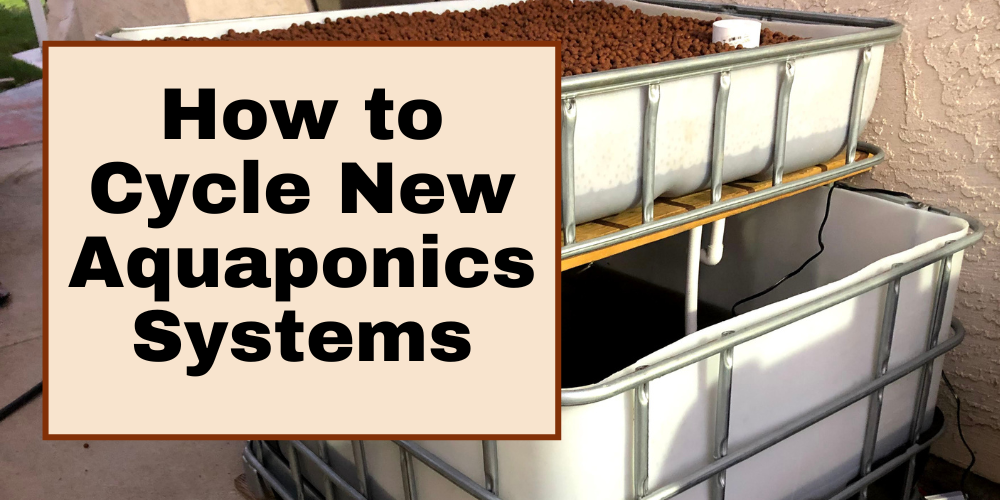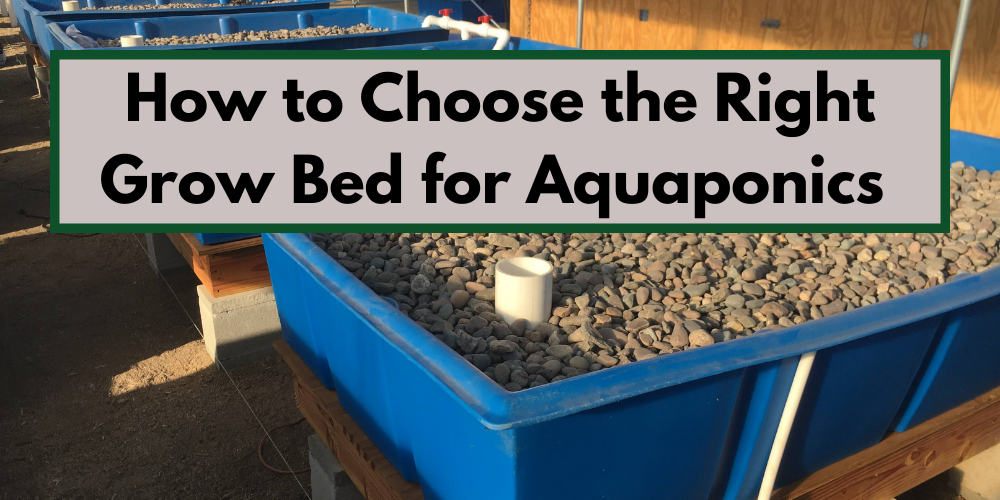If you’ve started your aquaponics journey, you’ve probably heard growers talk about the importance of pH. But what exactly does it mean, why does it matter so much, and how do you keep it balanced in your system?
Think of pH as the “control dial” of your aquaponics ecosystem. Get it right, and your fish stay healthy, your plants absorb nutrients efficiently, and your beneficial bacteria thrive. Get it wrong, and you’ll run into problems like poor plant growth, fish stress, or even system crashes.
In this blog, we’ll break down everything you need to know about pH in aquaponics, from the ideal range for fish and plants to practical tips on testing and adjustment. By the end, you’ll not only understand how pH works in your system but also have the confidence to manage it effectively.
What is pH and Why It Matters in Aquaponics?
At its simplest, pH is a measure of how acidic or alkaline your water is, on a scale from 0 to 14. A pH of 7 is neutral, below 7 is acidic, and above 7 is alkaline.
In an aquaponics system, pH is more than just a number, it’s the foundation of balance between your three living components:
1. Fish:
Most aquaponic fish species(like tilapia, catfish, and carp) thrive in slightly alkaline water but can suffer stress if pH swings too high or too low.
2. Plants:
Nutrient absorption is strongly tied to pH. If the water is outside the ideal range, plants can’t access the nutrients they needed to grow, even if they’re present in the system.
3. Nitrifying bacteria:
These microscopic helpers convert fish waste into nutrients for plants. But they’re especially sensitive to acidic conditions, slowing down when pH drops too low.
Because all three depend on stable pH, it’s often called the “keystone parameter” of aquaponics water quality. If you only track one water measurement consistently, it should be pH.
The Ideal pH Range for Aquaponics Systems
So, what should your pH actually be? While there is not a single “perfect” number, most successful aquaponics systems operate best within a pH range of 6.8 to 7.2. This range keeps your three key players, fish, plants, and nitrifying bacteria reasonably happy.
Here’s why:
- Fish:Most common aquaponics fish species, like tilapia, catfish, and carp, do well in slightly alkaline water (around 7.0–7.5). A pH below 6.5 or above 8.0 can cause stress and weaken their immune systems.
- Plants:Many vegetables prefer slightly acidic water (6.0–6.5) because nutrients are more available in that range. At higher pH levels, some nutrients “lock out,” leaving plants yellowing or stunted even if the nutrients are present.
- Nitrifying bacteria:These microbes that convert ammonia into nitrite. Nitrate perform best around pH 7.0–8.0, though their activity slows down if pH dips too low.
This is why aquaponics growers often compromise which means aiming for a pH range that’s not perfect for one group but acceptable for all. Around 6.8–7.2 is a safe, balanced middle ground.

Tools for Monitoring pH in Aquaponics
Monitoring pH levels is essential for maintaining the health and stability of aquaponic systems. Here are several tools available for accurately measuring pH in aquaponics:
A. pH Meters
Digital pH meters provide precise readings of pH levels in the water. These meters typically feature probes that are immersed directly into the aquaponic water, allowing for real-time monitoring of pH.
Our recommended pH meters for aquaponics systems:
1. Hanna Waterproof Pocket pH Tester
Check on Gogreen
Check on Amazon
A compact and affordable pH meter designed for on-the-go testing in aquaponic setups. This accurate pH tester features 0.1 resolution with automatic two-point calibration and temperature compensation in a single, portable, pocket device.
2. Bluelab pH Pen
A portable and waterproof pH meter with a digital display, suitable for quick and accurate pH measurements in aquaponics systems. It features a replaceable probe and automatic temperature compensation for reliable results.
B. pH Test Kits
Test kits containing pH indicator solutions or test strips are cost-effective alternatives for monitoring pH. These kits provide colorimetric readings based on the color change of the indicator solution or test strip when immersed in the water sample.
Our recommended pH test kits for aquaponics systems:
1.API Freshwater Master Test Kit
Check on Gogreen
Check on Amazon
This comprehensive test kit includes tests for pH, ammonia, nitrite, and nitrate levels, providing a complete solution for monitoring water quality in aquaponics systems. It offers easy-to-read color charts and accurate results for precise pH measurements.
2. LaMotte 5858-01 pH Test Kit
A professional-grade pH test kit is suitable for aquaponics enthusiasts and commercial operators alike. It features high-quality reagents and precision colorimetric analysis for accurate pH measurements in aquaponics systems.
C. Continuous Monitoring Systems
Automated pH monitoring systems offer continuous monitoring of pH levels in aquaponics systems. These systems often integrate with controllers or alarms to alert users of any fluctuations or deviations from the desired pH range.
Our recommended monitoring system for aquaponics systems:
1. Bluelab Guardian Monitor Connect
This advanced monitoring system offers continuous monitoring of pH, conductivity, and temperature in aquaponic systems. It features wireless connectivity, allowing users to remotely access and view real-time data via a smartphone or computer. The Guardian Monitor Connect provides accurate and reliable measurements, making it an excellent choice for aquaponic enthusiasts and commercial operators.
2. HYDROS Pinpoint pH Pro
The HYDROS Pinpoint pH Probe is a Probe port accessory. Set target pH ranges for your system on the app and receive immediate mobile alerts when the pH rises or falls out of the safe range.
How Often Should You Check pH?
- New systems (cycling phase): Daily checks are recommended since pH can swing quickly as bacteria establish.
- Established systems:Once or twice per week is usually enough, unless you notice signs of plant or fish stress.
- Whenever troubleshooting: If your plants look yellow or fish seem stressed, check pH first, it’s often the culprit.
Tip:Always test your water at the same time of day for more consistent results. Natural processes like photosynthesis can cause slight fluctuations between morning and evening.
Common Causes of pH Fluctuations in Aquaponics
Even if you start with perfect water, your pH won’t stay put forever. That’s because an aquaponics system is a living ecosystem, and as fish, plants, and bacteria do their jobs, the water chemistry naturally shifts.
Here are the most common reasons your pH may change over time:
1. Nitrification Process
The bacteria that convert ammonia into nitrite and into nitrate release acids as a byproduct. Over time, these acids slowly lowers pH. This is one of the most common causes of pH drift in established systems.
2. Carbonate Hardness (KH) Levels
Your water’s natural buffering capacity (measured as KH) helps resist changes in pH. If your source water is low in carbonate hardness, your system may experience sudden pH swings.
3. Source Water Quality
Tap water, rainwater, or well water each come with different starting pH and mineral content. For example, rainwater is often acidic, while hard tap water may be alkaline.
4. Plant and Fish Activity
- Plants absorbing nutrients can subtly change pH levels over time.
- Fish respiration and waste also influence water chemistry, which in turn affects pH balance.
5. Over-Correcting with Additives
Beginners sometimes add too much pH adjuster at once, causing sudden swings that stress fish and bacteria more than a slightly off-range pH would have.
Tip:pH drifting slowly downward over weeks is normal as nitrification takes place. The danger comes when changes happen suddenly. Consistency is key.
How to Safely Adjust pH in Aquaponics Systems
When your pH drifts too far outside the ideal range, you may need to adjust it. But here’s the golden rule: make small, gradual changes. Sudden shifts can shock your fish and bacteria, doing more harm than good.
Methods for Lowering pH
- Phosphoric Acid (H₃PO₄): Commonly used in aquaponics, it lowers pH while also providing phosphorus for plants.
- Nitric Acid (HNO₃):Another option, though less beginner-friendly.
- Avoid Household Fixes:Substances like vinegar or lemon juice cause fast, unstable swings and aren’t recommended.
Methods for Raising pH
- Potassium Hydroxide (KOH): Raises pH while adding potassium, a vital plant nutrient.
- Calcium Hydroxide (Ca(OH)₂): Raises pH and boosts calcium, another essential nutrient.
- Many growers alternate between potassium and calcium sources to maintain nutrient balance.
Best Practices for Adjusting pH
- Dilute before dosing:Mix pH adjusters in water first, then add gradually to your system.
- Go slow: Make small changes, retest after a few hours, and repeat if needed.
- Target stability:Aim for steady pH rather than chasing an exact number.
- Track your adjustments:Keep a log of doses and results to spot patterns over time.

The Relationship Between pH and Nutrient Availability
One of the most important reasons to manage pH carefully is its direct impact on nutrient availability for plants. Even if your water is full of nutrients, plants can’t always use them unless the pH is in the right range.
Nutrient Lockout at Different pH Levels
- Low pH (below 6.0): Micronutrients like iron, manganese, and copper may become too available, reaching toxic levels.
- High pH (above 7.5): Essential nutrients like phosphorus, potassium, and nitrogen can become less available, leading to deficiencies.
- Sweet spot (6.8–7.2): Most nutrients remain available in balanced amounts, supporting strong plant growth.
How This Shows Up in Plants
- Yellowing leaves (chlorosis):Often caused by iron lockout when pH is too high.
- Stunted growth: May result from phosphorus or potassium being unavailable.
- Weak stems or blossom end rot:Can indicate calcium imbalance linked to pH.
pH and Fish Health in Aquaponics
Your fish are the heartbeat of your aquaponics system, and their well-being is closely tied to pH. While many species are fairly tolerant, long-term exposure to the wrong pH or sudden swings, can cause stress, illness, or even mortality.
Ideal Ranges for Common Aquaponics Fish
- Tilapia:6.5–9.0 (best around 7.0–8.0)
- Catfish: 6.5–8.0
- Trout: 6.0–7.5 (more sensitive to low/high extremes)
- Carp: 6.5–8.5
Tip: Most aquaponics fish are comfortable between 6.5 and 7.5, which fits nicely with the “balanced system range” of 6.8–7.2.
How pH Affects Fish Health
- Low pH (acidic water):Increases ammonia toxicity and can damage gills. Fish may gasp at the surface or appear lethargic.
- High pH (alkaline water): Makes it harder for fish to regulate body functions, sometimes causing stress and reduced appetite.
- Sudden changes: Even if still within a safe range, a rapid pH shift can shock fish and lower their immune response.
Warning Signs of pH Stress in Fish
- Erratic swimming or gasping at the surface
- Loss of appetite
- Sluggish behavior
- Increased susceptibility to disease
Tip: When in doubt, test your pH first. Many beginner fish deaths are mistakenly blamed on disease or poor feed, when the real cause is unstable pH.
pH and Beneficial Bacteria in Aquaponics
Behind the scenes of every successful aquaponics system is a colony of nitrifying bacteria. These microbes are responsible for converting toxic ammonia into nitrite and into nitrate, making the water safe for fish and providing nutrients for plants.
But here’s the catch: nitrifying bacteria are highly sensitive to pH levels.
How pH Impacts Bacteria
- Optimal range: 7.0–8.0 is where nitrifying bacteria thrive.
- Below 6.0: Their activity slows dramatically, leading to ammonia buildup and stressed fish.
- Above 8.5:Growth and efficiency are also reduced.
- pH drift:Because nitrification produces acids, pH naturally trends downward over time, which can stress bacteria if unchecked.
Signs of Bacterial Trouble
- Rising ammonia or nitrite levels despite normal feeding.
- Plants looking weak even when nutrients should be available.
- Fish showing signs of stress from toxic water conditions.
Managing pH is not just about keeping fish and plants comfortable, it’s about ensuring your bacteria stay strong. A healthy bacterial colony is what makes aquaponics self-sustaining. Without it, your system simply won’t work.
Tips for Maintaining Stable pH in Aquaponics Systems
While occasional pH drift is normal, the key to a healthy aquaponics system is keeping pH changes gradual and predictable. Here are some proven strategies to keep your system stable:
1. Test Regularly
- Use a reliable digital pH meter or liquid test kit.
- Check at least once a week (more often if your system is new).
- Record results to track patterns over time.
2. Monitor Carbonate Hardness (KH)
- KH acts as a buffer that resists pH swings.
- If your KH is too low, consider adding natural buffers like crushed coral or potassium carbonate to stabilize levels.
3. Adjust Slowly and Safely
- Never add strong acids or bases directly to your system.
- Always dilute and dose gradually into top-up water.
- Aim for small, consistent corrections rather than chasing exact numbers.
4. Control Top-Up Water
- Test your source water before adding it to your system.
- Adjust pH in the top-up water first, then add it slowly to avoid shocking fish and bacteria.
5. Avoid Overfeeding
- Excess fish waste increases ammonia, which drives nitrification and accelerates pH drops.
- Feed only what your fish can consume in 5–10 minutes.
Troubleshooting pH Problems
Here are the most common problems beginners face and how to handle them:
Problem 1: pH Dropping Too Quickly
- Cause:Rapid nitrification, low carbonate hardness (KH), or overfeeding.
- Fix:
- Test KH, if it’s too low, add a natural buffer (like potassium carbonate or crushed coral).
- Reduce fish feeding and clean up uneaten food.
- Top up with water adjusted to a slightly higher pH.
Problem 2: pH Too High (Above 7.8)
- Cause:Hard water source or excessive use of pH-raising agents.
- Fix:
- Use rainwater or reverse osmosis (RO) water to dilute high-pH source water.
- Add pH-lowering agents slowly (like phosphoric acid) in top-up water.
- Avoid sudden corrections that shock fish.
Problem 3: pH Fluctuations (Morning vs. Evening Swings)
- Cause:Natural CO₂ absorption and release by plants and bacteria.
- Fix:
- Test at the same time daily to monitor true trends.
- Increase aeration to balance CO₂.
- Ensure your system has healthy biofiltration to buffer swings.
Conclusion
Mastering pH is one of the biggest milestones in your aquaponics journey. It’s the invisible thread that connects your fish, plants, and bacteria into one balanced ecosystem. When pH is stable, everything else in your system becomes easier, your fish thrive, your plants grow stronger, and your water stays clean and healthy.
The truth is, every grower faces pH challenges. What separates successful systems from struggling ones is not perfection, but understanding and consistency. By testing regularly, adjusting carefully, and focusing on stability, you can prevent most problems before they ever begin.












Cindy
July 16, 2023
Hi my system pH is recently betwewn 6.0-6.4( according to the test kit reading)
How to increase the volume of calcium carbonate and potassium carbonate into the water system?
The ratio between these two components?